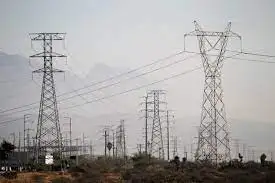Nanogenerators to power future?
That wire, the pronged plug - the panic when the charger has been left at home. It's so over, so 20th century.
In the future, we'll be able to power up our devices with a wave of the hand, a short walk or via our heartbeats, said engineers from the Georgia Institute of Technology.
Batteries are now a thing of the past, they said, thanks to nanotechnology that converts mechanical energy from body movements to electrical energy. Stretch an arm, take a stride, utilize the rhythm of the old ticker - and voila: BlackBerrys, iPhones, iPods are charged and ready, the scientists predict.
"This research will have a major impact on defense technology, environmental monitoring, biomedical sciences and even personal electronics," said lead researcher Zhong Lin Wang, an engineering professor at the campus.
"Quite simply, this technology can be used to generate energy under any circumstances as long as there is movement," Mr. Wang said.
The system relies on a distinctly "Star Trekian"-sounding device called the nanowire hybrid nanogenerator.
Flexible zinc oxide nanowires are "piezoelectric," generating an electric current when subjected to some mechanical stress. And the wires are little. Very little - with a diameter 1/5,000th of the diameter of human hair and a length that is essentially microscopic.
Mr. Wang and his 15-member team harvested "energy from the environment" by converting low-frequency vibrations - simple body movements, a passing breeze - into electricity. The flexible nanowires can be adapted for use in metals, ceramics, polymers, fabric and - because they are not toxic - the human body.
The researchers are particularly keen on embedding nanowires into shoes or clothing to harness the rhythmic resources of daily activities. They also hope to develop biomedical sensors to monitor blood sugar, blood pressure, heart rate or other body signs for those facing health challenges.
But don't throw out those phone chargers quite yet. Mr. Wang, who has been working on prototypes of similar devices since 2006, said the nano-powered charging device could come on the market in about five years.
The mills of the market gods grind slowly, however. In February, the world's 17 leading phone manufacturers finally agreed to use a standard-sized charger plug for mobile devices by 2012. It took them two years to reach the agreement.
Meanwhile, Mr. Wang recently tricked out a hamster with a nanowire and an oscilloscope to show that indeed, the rodent generated some respectable energy when racing on his exercise wheel or scratching an itch. And it doesn't take much.
"Smaller and smaller machines need less power. And our devices are getting much smaller," Mr. Wang said.
The research was presented at the annual meeting of the American Chemical Society in Salt Lake City.
Related News

Global push needed to ensure "clean, affordable and sustainable electricity" for all
NEW YORK - The seventh Sustainable Development Goal (SDG), SDG7, aims to ensure access to affordable, reliable, sustainable and modern energy for all.
However, those nations which remain most off the grid, are set to enter 2030 without meeting this goal unless efforts are significantly scaled up, warns the new study entitled Tracking SDG 7: The Energy Progress Report, published by the International Energy Agency (IAE), International Renewable Energy Agency (IRENA), UN Department of Economic and Social Affairs (UN DESA), World Bank, and World Health Organization (WHO).
“Moving towards scaling up clean and sustainable energy is key to protect human health and…




